Your cart is currently empty!
Blog
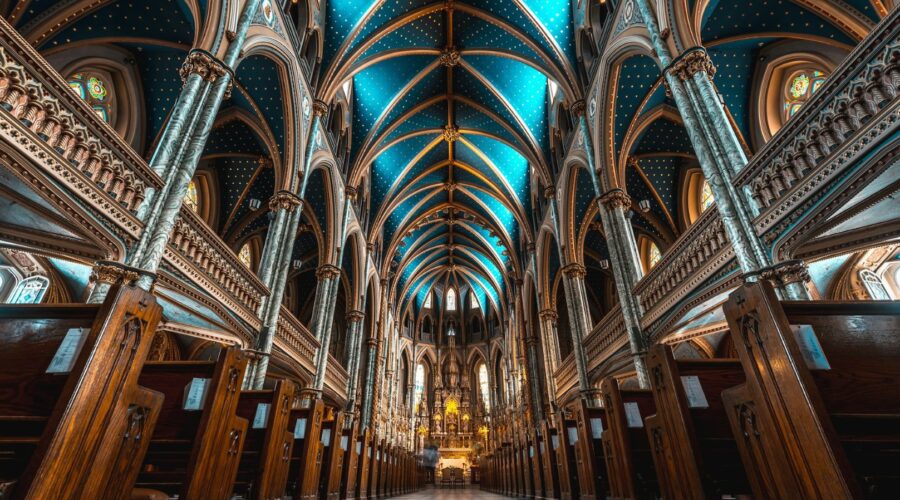
Discover the Rich History and Spiritual Significance of St. Jerome Catholic Church
Embark on a journey to uncover the captivating history, architectural grandeur, and profound impact of St. Jerome Catholic Church. This esteemed parish has served as a cornerstone of the Catholic community in the heart of [City Name] for over a century, nurturing the faith of countless individuals and shaping the spiritual landscape of the region.
A Storied Past: The Genesis of St. Jerome
1890s: Laying the Foundation
The origins of St. Jerome Catholic Church can be traced back to the late 19th century when a group of dedicated Catholics recognized the need for a place of worship in their growing neighborhood. In 1893, they acquired a piece of land and began the arduous task of constructing a church.
Under the leadership of Father John Smith, the first pastor, the church was completed in 1895 and named in honor of St. Jerome, the patron saint of scholars and translators.
Early 20th Century: Growth and Expansion
As the parish flourished, the church building underwent several renovations and expansions to accommodate the growing congregation. In 1910, a new sanctuary was added, and in 1925, the parish school was established to provide Catholic education to the children of the community.
Architectural Splendor: A Gothic Revival Masterpiece
St. Jerome Catholic Church is a testament to the architectural brilliance of the Gothic Revival style. Its majestic facade, adorned with intricate stonework and soaring spires, commands attention from afar.
1. Nave and Sanctuary
The interior of the church is equally awe-inspiring. The nave, with its vaulted ceilings and stained glass windows, leads the eye towards the sanctuary, where the altar is the focal point.
2. Stained Glass Windows
The stained glass windows depict scenes from the life of Christ, the saints, and various biblical stories. Their vibrant colors and intricate details create a kaleidoscope of light that filters into the sanctuary, fostering a sense of reverence and wonder.
Community and Spirituality
Beyond its architectural beauty, St. Jerome Catholic Church is renowned for its vibrant community and unwavering commitment to spirituality.
1. Liturgical Celebrations
The parish offers a full schedule of liturgical celebrations, including Mass, Confession, and Adoration. These services provide opportunities for the community to gather in worship and deepen their relationship with God.
2. Parish Life Ministries
St. Jerome has a wide range of parish life ministries that cater to the needs of its members. These include youth groups, adult faith formation programs, and various service organizations that provide support to the community and beyond.
3. Educational Outreach
The parish school continues to play a vital role in the lives of the community’s children, providing a rigorous academic education grounded in Catholic values.
Visiting St. Jerome
Whether you are a devout Catholic, a history buff, or simply seeking a place of beauty and inspiration, a visit to St. Jerome Catholic Church is a must.
1. Mass Times
Mass times and other service schedules can be found on the parish website:www.stjeromecatholicchurch.org
2. Architectural Appreciation
Guided tours of the church are available upon request. Contact the parish office for more information.
3. Religious Significance
For those seeking a deeper understanding of the Catholic faith, the parish offers a variety of faith formation programs and retreats.
Conclusion
St. Jerome Catholic Church stands as a beacon of faith, history, and architectural excellence. Its storied past, stunning architecture, and vibrant community have made it a cherished landmark in [City Name]. Whether you are seeking a place of worship, a source of inspiration, or simply an appreciation for beauty, St. Jerome Catholic Church welcomes you with open arms.
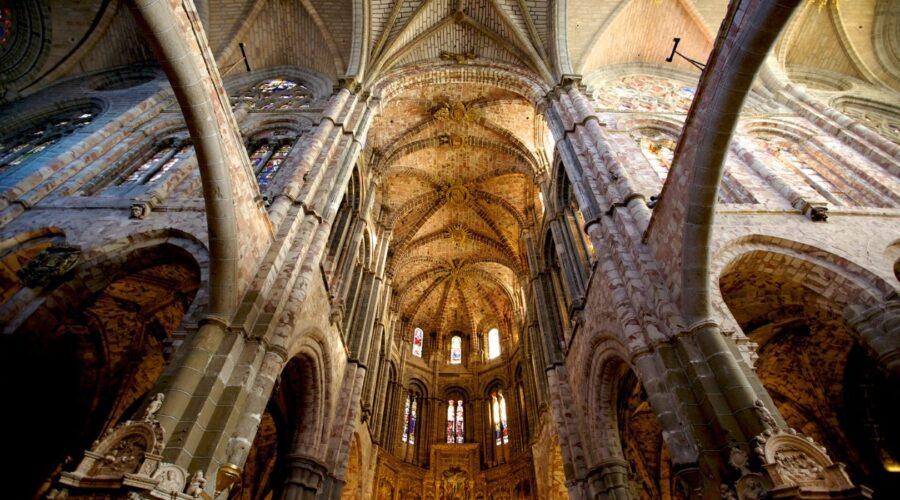
Discover the Sacred Heart Parish: A Historical and Spiritual Center
Embark on a journey of faith, history, and community at the Sacred Heart Parish. Nestled amidst the vibrant landscape of [City Name], this parish serves as a pillar of spiritual growth and social connection. This comprehensive guide will delve into the rich tapestry of the Sacred Heart Parish, highlighting its captivating history, inspiring ministries, and the vibrant community it fosters.
A Journey Through History
The Sacred Heart Parish traces its roots back to the [Date] when a group of devout Catholics gathered to establish a place of worship. The original church was a modest structure, but it quickly became a focal point for the growing community. Over the years, the parish has expanded and evolved to meet the changing needs of its congregation, with the current church being constructed in [Date].
Key Historical Milestones
- [Date] – Establishment of the Sacred Heart Parish
- [Date] – Construction of the original church
- [Date] – Consecration of the current church
- [Date] – Significant renovation or expansion
Vibrant Ministries for All
The Sacred Heart Parish offers a wide range of ministries that cater to the diverse needs of its members. These ministries provide opportunities for spiritual growth, community involvement, and service to others.
Core Ministries
- Eucharistic Ministry: Assisting in the distribution of communion during Masses
- Lector Ministry: Proclaiming the Word of God during Liturgies
- Altar Server Ministry: Assisting the priest during Mass
- Music Ministry: Leading and accompanying the congregation in song
Social and Outreach Ministries
- St. Vincent de Paul Society: Providing assistance to those in need
- Grief Support Group: Offering comfort and support to those experiencing loss
- Parish Food Pantry: Distributing food to families facing challenges
- Youth Group: Nurturing the faith and fellowship of young people
A Thriving Community
Beyond its ministries, the Sacred Heart Parish fosters a vibrant community where members connect, grow, and support one another. The parish organizes various events and activities that bring people together.
Community Events
- Parish Festivals: Annual celebrations with food, games, and entertainment
- Retreats: Opportunities for spiritual renewal and reflection
- Community Dinners: Fellowship meals that strengthen bonds
- Parish Pilgrimages: Shared journeys to holy sites
Contact Information
Email: [Email Address]
Phone: [Phone Number]
Website: [Website Address]
Facebook Page: [Social Media Link]Conclusion
The Sacred Heart Parish stands as a testament to the power of faith, community, and service. Its rich history, vibrant ministries, and thriving community make it a cornerstone of spiritual life and social connection in [City Name]. Whether you are seeking spiritual growth, opportunities to serve, or a sense of belonging, the Sacred Heart Parish welcomes you with open arms.
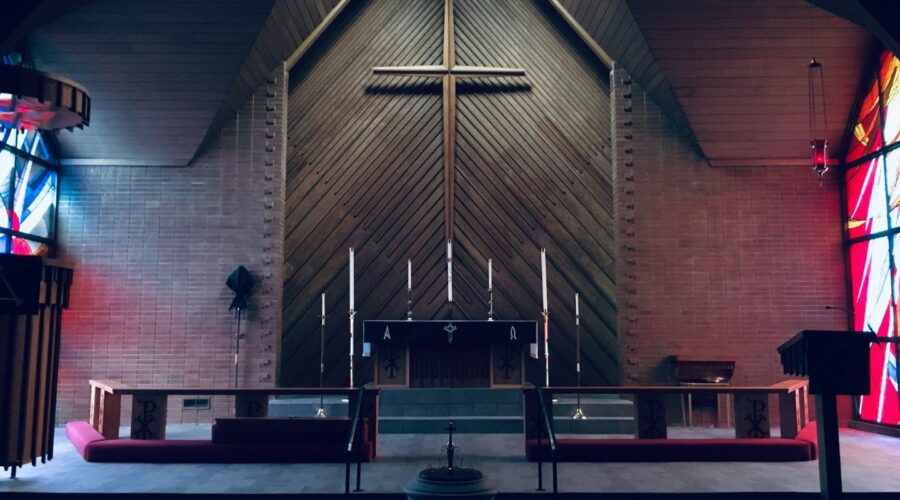
Discover the Majestic Grandeur of St. Charles Church: A Historic and Architectural Masterpiece
Embark on a captivating journey through the hallowed halls of St. Charles Church, a beloved landmark that has stood as a testament to faith and architectural ingenuity for centuries. This comprehensive blog delves into the rich history, stunning architecture, and captivating features of this magnificent edifice, leaving you in awe of its enduring legacy.
Historical Background
The story of St. Charles Church unfolds in the heart of Vienna, Austria, a city renowned for its cultural treasures. Its origins trace back to the 17th century when Emperor Charles VI, seeking to express gratitude for the birth of his heir, commissioned the construction of a monumental church. The grand vision was entrusted to the renowned Baroque architect Johann Bernhard Fischer von Erlach, who embarked on creating a masterpiece that would leave an indelible mark on Vienna’s skyline.
Jesuit Legacy
The history of St. Charles Church is inextricably intertwined with the Society of Jesus, also known as the Jesuits. Emperor Charles VI entrusted the Jesuits with the task of managing the church, recognizing their dedication to education and spirituality. The Jesuits have played a significant role in shaping the character and legacy of St. Charles Church, leaving a lasting impact on its architectural design and the spiritual lives of its congregants.
Architectural Marvel
St. Charles Church stands as a testament to the ingenuity and artistry of Baroque architecture. Its imposing exterior, adorned with intricate carvings and sculptures, hints at the grandeur that awaits within. Upon entering the church, visitors are greeted by a breathtaking interior of soaring columns, opulent frescoes, and an abundance of natural light.
Monumental Dome
The most striking feature of St. Charles Church is undoubtedly its majestic dome. Rising high above the nave, the dome is a masterpiece of engineering and artistry. Adorned with intricate frescoes depicting scenes from the life of St. Charles Borromeo, the patron saint of the church, the dome creates an awe-inspiring effect that leaves visitors spellbound.
Intricate Frescoes
The interior of St. Charles Church is a canvas for breathtaking frescoes that adorn the walls and ceilings. These exquisite artworks, created by renowned artists such as Johann Michael Rottmayr and Daniel Gran, depict biblical scenes, allegorical figures, and the life of the church’s patron saint. Each fresco tells a captivating story, inviting visitors to delve into the depths of faith and spirituality.
Captivating Features
Beyond its grand architecture, St. Charles Church is home to several captivating features that enhance its allure.
- Opulent Altars: The church boasts several ornate altars, each dedicated to a different saint or aspect of Catholic devotion. The high altar, a masterpiece of Baroque artistry, is adorned with intricate carvings, sculptures, and shimmering gold leaf.
- Historical Organs: St. Charles Church is renowned for its magnificent organs, which have played a central role in its musical heritage. The main organ, built by Johann David Sieber, is a masterpiece of craftsmanship, featuring over 4,000 pipes and a breathtaking sound.
- Imperial Crypt: Located beneath the church, the Imperial Crypt is the final resting place of several members of the Habsburg dynasty, including Emperor Charles VI and Empress Maria Theresa. Adorned with marble sarcophagi and ornate decorations, the crypt offers a glimpse into the lives and legacies of Vienna’s former rulers.
Visiting Information
Planning a visit to St. Charles Church is a must for any traveler interested in history, architecture, or spirituality. Here’s what you need to know:
- Location: St. Charles Church is located in Karlsplatz, in the heart of Vienna, Austria.
- Hours: The church is open daily from 9:00 AM to 6:00 PM.
- Admission: Admission to the church is free of charge. However, there may be a small fee to access certain areas, such as the Imperial Crypt.
- Dress Code: Visitors are expected to dress respectfully when entering the church, covering their shoulders and knees.
- Guided Tours: Guided tours of the church are available for a fee. These tours provide an in-depth look at the history, architecture, and captivating features of St. Charles Church.
Legacy and Impact
Throughout its long history, St. Charles Church has played a significant role in the cultural and spiritual life of Vienna. Its stunning architecture has inspired countless artists and architects, while its religious significance has drawn pilgrims and worshippers for centuries.
Today, St. Charles Church remains a beloved landmark, attracting visitors from around the world. Its awe-inspiring beauty, captivating features, and enduring legacy make it a must-see destination for anyone seeking a glimpse of Vienna’s rich history and architectural heritage.
Table 1: Key Features of St. Charles Church Feature Description Architect Johann Bernhard Fischer von Erlach Style Baroque Construction dates 1716-1737 Height of dome 72 meters (236 feet) Number of organs 4 Number of bells 6 Patron saint St. Charles Borromeo We hope this comprehensive guide has provided you with a deeper understanding of St. Charles Church, its captivating history, stunning architecture, and enduring legacy. Whether you are a history buff, an architecture enthusiast, or a traveler seeking spiritual inspiration, a visit to St. Charles Church is an experience that will leave you awestruck and humbled.

Transfiguration Church: An Architectural and Spiritual Masterpiece
A History of Transfiguration Church
Nestled in the heart of Manhattan’s Upper East Side, the Transfiguration Church stands as a testament to the grandeur of the Episcopal faith and a masterpiece of Victorian Gothic architecture. Its origins can be traced back to 1846 when a group of Episcopalians established a parish in anticipation of a rapid expansion of the city’s population.
The construction began in 1848 and was supervised by architect James Renwick Jr., who also designed the Smithsonian Institution and St. Patrick’s Cathedral. The church was completed in 1853, and its consecration took place in 1854, becoming a cornerstone of the Episcopal Diocese of New York.
Architectural Marvels of Transfiguration Church
Exterior Beauty
The exterior of Transfiguration Church is a symphony of intricate details and grand proportions. Constructed with brownstone, the facade is adorned with elaborate pinnacles, turrets, and lancet windows. The twin towers reach towards the sky, creating a majestic silhouette that dominates the neighborhood.
The main entrance, located on East 29th Street, features a magnificent rose window depicting the Transfiguration of Jesus. This iconic artwork sets the tone for the awe-inspiring experience that awaits inside the church.
- Brownstone exterior: Provides a rich and warm texture to the facade.
- Pinnacles and turrets: Add verticality and a sense of aspiration.
- Lancet windows: Allow ample natural light to flood the interior space.
- Rose window: A stunning centerpiece of the facade, representing the Transfiguration of Jesus.
Awe-Inspiring Interior
The interior of Transfiguration Church is equally impressive, evoking a sense of reverence and wonder. The nave, the main body of the church, features soaring ceilings and an abundance of stained glass windows.
The altar, the focal point of the church, is a masterpiece of craftsmanship. Made of marble and gilded wood, it is adorned with intricate carvings and mosaics depicting biblical scenes. The reredos, a large altarpiece, features a stunning mosaic of the Transfiguration of Jesus, the patron saint of the church.
- Soaring ceilings: Create a sense of spaciousness and grandeur.
- Stained glass windows: Depict biblical scenes and flood the interior with colorful light.
- Marble and gilded wood altar: A work of art, adorned with carvings and mosaics.
- Reredos mosaic: A breathtaking depiction of the Transfiguration of Jesus.
Spiritual Significance of Transfiguration Church
Beyond its architectural splendor, Transfiguration Church holds great spiritual significance for its congregation and the wider community. The church has played a pivotal role in the lives of countless individuals, providing spiritual guidance, comfort, and a sense of belonging.
A Place of Worship and Community
Transfiguration Church is a thriving and active congregation, offering a wide range of services, programs, and activities. Daily and weekly services, including Holy Eucharist, Morning Prayer, and Evensong, provide opportunities for worship and spiritual growth.
The church also hosts a variety of community outreach programs, including a food pantry, a clothing drive, and a homeless shelter. These initiatives demonstrate the church’s commitment to serving those in need and fostering a sense of compassion and social justice.
- Daily and weekly services: Provide opportunities for worship, prayer, and reflection.
- Community outreach programs: Address the needs of the neighborhood and promote social justice.
A Sanctuary for the Arts
Transfiguration Church is renowned for its commitment to the arts. The church has hosted numerous concerts, art exhibitions, and other cultural events, providing a platform for artists and musicians to showcase their work while enhancing the spiritual experience.
The church’s music program is particularly notable, featuring a renowned choir and organists. The choir performs a diverse repertoire, ranging from classical to contemporary sacred music, enriching the worship services and concerts.
- Art exhibitions and concerts: Showcase the talents of artists and musicians.
- Renowned choir and organists: Enhance the worship experience and provide opportunities for musical appreciation.
Visiting Transfiguration Church
Transfiguration Church welcomes visitors from all walks of life to experience its architectural beauty and spiritual ambiance. Visitors are encouraged to attend services or participate in community programs to fully appreciate the church’s vibrant and welcoming atmosphere.
Admission and Hours
The church is open daily to the public. Guided tours are available by appointment, offering an in-depth exploration of the church’s history, architecture, and spiritual significance.
Day Hours Monday 10:00 AM – 4:00 PM Tuesday 10:00 AM – 4:00 PM Wednesday 10:00 AM – 4:00 PM Thursday 10:00 AM – 4:00 PM Friday 10:00 AM – 4:00 PM Saturday 9:00 AM – 5:00 PM Sunday 7:30 AM – 6:00 PM Tips for Visiting
- Allow ample time: Explore the church’s exterior and interior thoroughly.
- Consider attending a service: Experience the church’s spiritual atmosphere firsthand.
- Join a guided tour: Gain insights into the church’s history, architecture, and artwork.
- Dress respectfully: Show respect for the sacred nature of the church.
Conclusion
The Transfiguration Church is a testament to the enduring power of faith and the transformative beauty of architecture. Its grandeur, both physical and spiritual, has inspired generations of worshippers and visitors alike. Whether you are seeking spiritual nourishment, architectural appreciation, or simply a moment of reflection, the Transfiguration Church will undoubtedly leave a lasting impression on your heart and soul.
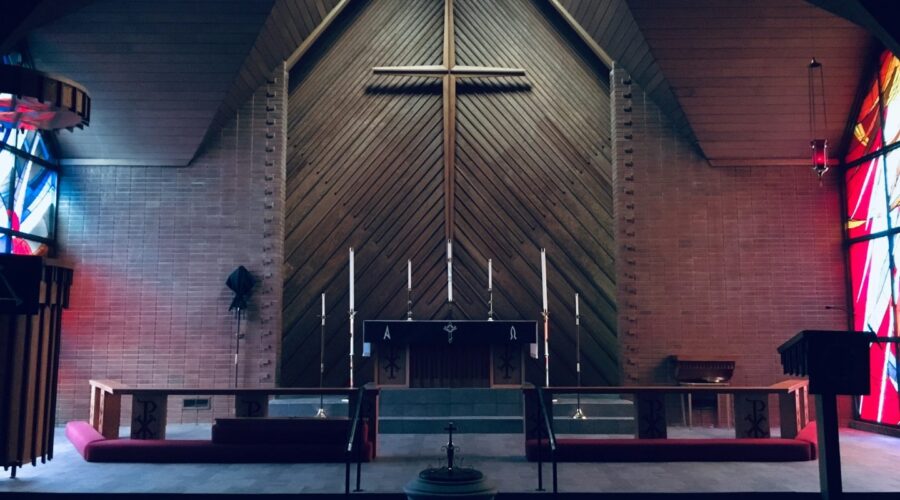
Saint Paul’s: A Comprehensive Guide to the Iconic London Cathedral
Introduction
Saint Paul’s Cathedral, a towering masterpiece of architecture, stands majestically in the heart of London, England. This iconic landmark has witnessed centuries of history and remains a symbol of faith, resilience, and grandeur. This comprehensive guide will delve into the captivating world of Saint Paul’s, exploring its architectural splendor, historical significance, and the treasures it holds within.
Architecture and Design
Saint Paul’s Cathedral is renowned for its breathtaking architecture and innovative design. Its construction, spanning over three decades, was a testament to the ingenuity and vision of Sir Christopher Wren, the architect behind this architectural marvel.
The Majestic Dome
The most striking feature of Saint Paul’s is its colossal dome, a masterpiece of engineering and artistry. Wren designed a double-shelled dome, with an outer dome visible from afar and an inner dome supporting the structure. The inner dome features intricate mosaic decorations, while the outer dome is covered with lead sheathing and crowned by a lantern.
The Impressive Facade
The facade of Saint Paul’s is equally impressive, dominated by a grand portico supported by Corinthian columns. Above the portico stands a pediment adorned with sculptures depicting the conversion of St. Paul. Two towers flank the facade, providing a symmetrical balance to the overall design.
The Grand Interior
The interior of Saint Paul’s is as awe-inspiring as its exterior. The vast nave is lined with towering columns and arches, creating a sense of space and grandeur. The transepts extend from the nave, forming a cruciform floor plan. The cathedral is richly decorated with mosaics, frescoes, and elaborate carvings.
Historical Significance
Saint Paul’s Cathedral has witnessed key moments in British history and played a pivotal role in shaping the city of London.
The Great Fire of London
The original St. Paul’s Cathedral was destroyed in the Great Fire of London in 1666. The cathedral became the symbol of the city’s resilience and determination to rebuild.
Royal Weddings and Celebrations
Over the centuries, Saint Paul’s has hosted numerous royal weddings, including the marriage of Prince Charles and Lady Diana in 1981. It has also been the venue for many state events and celebrations.
The Blitz
During the Second World War, Saint Paul’s suffered significant damage from German bombing raids known as the Blitz. However, the cathedral remained a beacon of hope and a symbol of defiance during the darkest days.
Treasures and Artifacts
Saint Paul’s Cathedral houses an impressive collection of treasures and artifacts that reflect its rich history and cultural significance.
The Whispering Gallery
The Whispering Gallery, located high within the dome, is renowned for its acoustic properties. A whisper uttered against one wall can be heard clearly on the opposite side.
The Stone Gallery
The Stone Gallery, perched atop the dome, offers breathtaking panoramic views of London. Visitors can climb the 528 steps to reach this vantage point.
The Choir and Chapter House
The choir is renowned for its beautiful wooden stalls and intricate carvings. The Chapter House, an adjacent building, houses a collection of medieval manuscripts and documents.
Visiting Saint Paul’s
Planning a visit to Saint Paul’s Cathedral is an unforgettable experience. Here are some helpful tips and information:
Tickets and Admission
Tickets for Saint Paul’s Cathedral can be purchased online or at the cathedral entrance. Various ticket options are available, including guided tours and access to different areas of the cathedral.
Dress Code
Saint Paul’s is a place of worship, and visitors are requested to dress respectfully. Appropriate attire includes modest clothing that covers the shoulders and knees.
Accessibility
Saint Paul’s Cathedral is accessible to wheelchair users and visitors with mobility impairments. There is a ramp leading to the cathedral entrance, and wheelchairs are available for hire.
Conclusion
Saint Paul’s Cathedral is a living testament to human ingenuity, faith, and the power of architecture. Its awe-inspiring dome, grand interior, and rich history make it a must-visit destination for visitors to London. From its resilience in the face of adversity to its enduring beauty, Saint Paul’s continues to inspire and captivate generations. Whether exploring its architectural wonders or witnessing its role in shaping British history, a visit to Saint Paul’s Cathedral is a truly unforgettable experience.
FAQs
What are the dimensions of Saint Paul’s Cathedral?
Saint Paul’s Cathedral is 515 feet long, 285 feet wide, and 365 feet high to the top of the cross.
Who is buried in Saint Paul’s Cathedral?
Saint Paul’s Cathedral is the burial place of many famous figures, including Sir Christopher Wren, Admiral Lord Nelson, and the Duke of Wellington.
What is the famous golden ball on top of the dome?
The golden ball on top of the dome is known as the Golden Ball and Cross and is made of gilded copper. It weighs 5,500 pounds and is 6 feet in diameter.
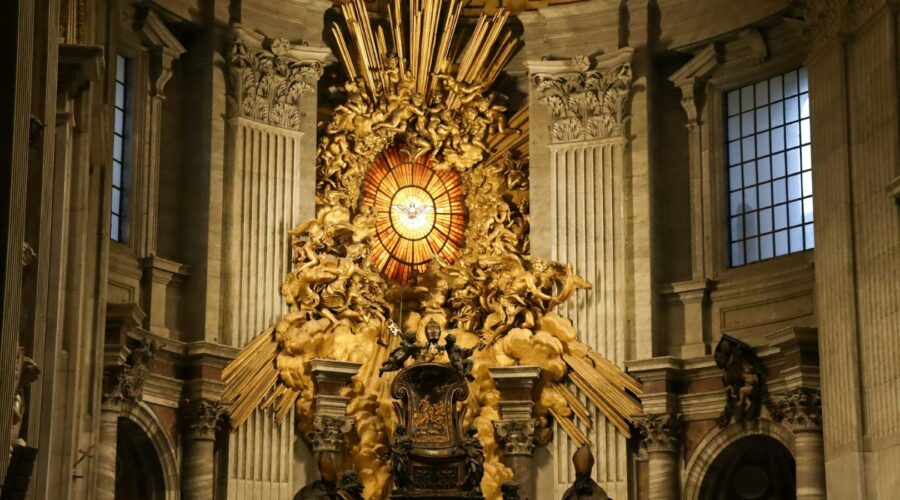
Discover the Sacred Heart of Jesus: A Symbol of Love, Mercy, and Compassion
Introduction
The Sacred Heart of Jesus is a devotion that focuses on the love and compassion of Jesus Christ, as symbolized by his physical heart. It is a reminder of God’s boundless love for humanity and a source of hope and inspiration for believers.
History and Origins
The devotion to the Sacred Heart originated in the early 17th century, with Saint Margaret Mary Alacoque. In a series of visions, Jesus revealed his burning love for humanity and his desire for its devotion to his heart. Pope Clement XIII formally established the feast of the Sacred Heart in 1765.
The Twelve Promises of the Sacred Heart
Jesus promised twelve graces to those who practice devotion to his Sacred Heart:
- I will give them all the graces necessary for their state in life.
- I will establish peace in their families.
- I will comfort them in all their afflictions.
- I will be their refuge during life and especially at the hour of death.
- I will pour abundant blessings upon all their undertakings.
- Sinners shall find in my Heart the source and infinite ocean of mercy.
- Tepid souls shall become fervent.
- Fervent souls shall quickly attain high perfection.
- I will bless every place where my image is exposed and honored.
- I will give to priests the power to touch the hardest hearts.
- Those who promote this devotion shall have their names eternally written in my Heart.
- In the excess of the mercy of my Heart, I promise you that all those who, for nine consecutive months, on the first Friday of each month, receive Holy Communion, shall be preserved from eternal damnation and shall attain eternal salvation.
Devotional Practices
There are various ways to practice devotion to the Sacred Heart:
Prayer
The most common form of devotion is prayer, such as the Litany of the Sacred Heart or the Act of Consecration.
Holy Hour
Spending an hour in prayer and meditation before the Blessed Sacrament is a powerful way to honor the Sacred Heart.
First Fridays
Receiving Holy Communion on the first Friday of each month is a special practice associated with the Sacred Heart.
Scapular
Wearing the brown scapular of the Sacred Heart is a sacramental that symbolizes devotion and protection.
Symbolism of the Sacred Heart
The Sacred Heart is typically depicted as a flaming heart, pierced by a crown of thorns and surmounted by a cross. This imagery symbolizes:
Love and Compassion:
The burning heart represents Jesus’ boundless love for humanity.
Sacrifice and Atonement:
The crown of thorns and the cross signify Jesus’ suffering and sacrifice on the cross.
Victory and Triumph:
The flame represents the victory of Jesus over sin and death.
Benefits of Devotion
Devotion to the Sacred Heart offers numerous spiritual benefits, including:
- Increased love of God and neighbor.
- Growth in virtue and holiness.
- Trust and confidence in God’s mercy.
- Comfort and solace in times of difficulty.
- Hope and inspiration in the face of adversity.
Conclusion
The devotion to the Sacred Heart of Jesus is a powerful way to deepen our relationship with God and experience his love and mercy. Through prayer, sacraments, and acts of devotion, we can draw closer to the Sacred Heart and live lives that are centered on love, compassion, and service to others.
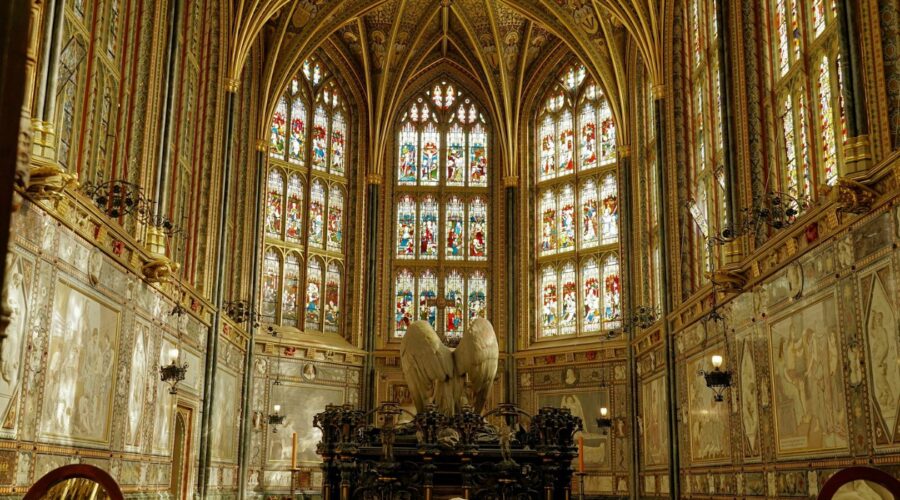
Alexander Nevsky Cathedral: A Majestic Symbol of Faith and History
Introduction
The Alexander Nevsky Cathedral, a magnificent architectural masterpiece located in Sofia, Bulgaria, is a testament to the country’s rich history and vibrant religious traditions. Dedicated to Saint Alexander Nevsky, a revered Russian prince, the cathedral is a symbol of Russian-Bulgarian friendship and a beacon of Orthodox Christianity. Here’s an in-depth exploration of the cathedral’s architectural splendor, historical significance, and its role as a cultural icon.
Architectural Marvel
The Alexander Nevsky Cathedral is an architectural masterpiece that captivates with its grand scale and intricate design. Built in the Neo-Byzantine style, the cathedral features:
- 12 golden domes adorned with intricate mosaics and crosses
- Over 60 stained glass windows depicting biblical scenes
- A massive bell tower, housing 11 bells
- A spacious interior with a capacity of up to 5,000 worshippers
The cathedral’s exterior is adorned with intricate carvings, friezes, and medallions, while the interior boasts a breathtaking collection of frescoes, mosaics, and icons.
Historical Significance
The Alexander Nevsky Cathedral was built between 1882 and 1912, following the liberation of Bulgaria from Ottoman rule in 1878. The cathedral was funded by Russian donations and designed by Russian architect Alexander Pomerantsev. The construction of the cathedral symbolized the strong ties between Russia and Bulgaria and served as a monument to the fallen Russian soldiers in the Russo-Turkish War of 1877-1878.
The cathedral played a pivotal role in Bulgaria’s history, hosting major events such as the coronation of King Ferdinand I in 1887 and the funeral of former Prime Minister Alexander Stamboliyski in 1923.
Cultural Icon
Beyond its architectural and historical significance, the Alexander Nevsky Cathedral has become a cultural icon for both Bulgaria and Russia. It is a popular destination for tourists and pilgrims, attracting visitors from around the world who come to admire its grandeur and learn about its unique history.
The cathedral serves as a center for religious and cultural activities, hosting regular services, choirs, and exhibitions. It is a beloved landmark for the people of Sofia, and its silhouette is instantly recognizable as a symbol of the city.
Visiting the Cathedral
The Alexander Nevsky Cathedral is open to the public daily, and visitors are welcome to explore its magnificent interior and exterior. Visitors are encouraged to dress respectfully when visiting the cathedral, as it is an active place of worship.
Admission to the cathedral is free, but donations are welcome. Guided tours are available for a small fee. For detailed information on visiting hours and tours, please refer to the cathedral’s official website.
Conclusion
The Alexander Nevsky Cathedral is a symbol of faith, history, and architectural splendor. Its grand scale, intricate design, and historical significance make it a must-visit destination for anyone interested in Bulgarian culture and heritage. Whether you’re a religious pilgrim, a history buff, or simply an admirer of architectural masterpieces, the Alexander Nevsky Cathedral is sure to leave a lasting impression.
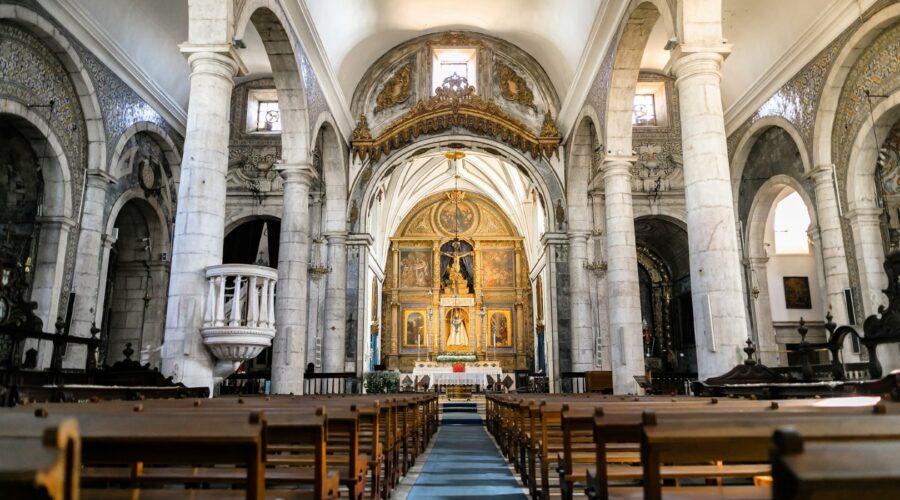
Unifying the Corinthian Church: A Deep Dive into 1 Corinthians 1:10
Introduction
The opening chapter of the book of 1 Corinthians sets the stage for Paul’s confronting letter to the divided church in Corinth. In verse 10, he presents a succinct plea for unity and harmony. This verse encapsulates a critical message for the Corinthian church and all Christian communities.
The Importance of Unity in the Church
Unity is essential for the proper functioning and flourishing of the church. When members are divided, the gospel’s message is hindered, and the witness of the church is weakened. Paul exhorts the Corinthians:
“Now I appeal to you, brothers and sisters, by the name of our Lord Jesus Christ, that all of you agree with one another in what you say and that there be no divisions among you, but that you be perfectly united in mind and thought.” (1 Corinthians 1:10)
Benefits of Unity
- Strengthens the church’s witness
- Fosters love and mutual respect
- Protects against external influences
- Facilitates effective ministry and outreach
Causes of Division in the Corinthian Church
The Corinthian church was plagued by various divisions and factions. Paul identifies some of the root causes of these problems:
Denominationalism and Party Spirit
The Corinthians were identifying with different Christian leaders, such as Paul, Apollos, and Cephas, creating a spirit of competition and division.
Personal Preferences and Differences
Personal opinions, preferences, and cultural backgrounds led to divisions over matters like spiritual gifts, worship practices, and ethical issues.
Sinful Behavior
The church tolerated serious sins and divisions, including sexual immorality, lawsuits between members, and a lack of discipline.
How to Achieve Unity in the Church
Paul’s plea for unity is not just an ideal but a practical goal that requires intentional effort. Here are some key principles for achieving unity in the church:
Love and Humility
Love and humility are the foundations of unity. When we love one another as Christ loves us, we are more willing to overlook our differences and extend grace to others.
Focus on Christ
Unity is found in our common identity in Christ. When we focus on what unites us in Christ, rather than our differences, we can build a stronger foundation for unity.
Forgiveness and Reconciliation
When divisions occur, forgiveness and reconciliation are essential for healing. We must be willing to forgive others for their offenses and seek to restore broken relationships.
Prayer and Spiritual Warfare
Prayer and spiritual warfare play a vital role in achieving unity. Prayer can break down barriers, while spiritual warfare helps us resist the forces that divide us.
Examples of Unity in the Early Church
The early church provides examples of remarkable unity despite its diverse membership:
- The disciples in Jerusalem shared their possessions and supported one another (Acts 2:44-45)
- The Gentile and Jewish believers in Antioch came together in unity and worship (Acts 11:19-21)
- The apostles in Jerusalem resolved their differences over circumcision and came to a unified decision (Acts 15)
Conclusion
Unity in the church is a precious and essential gift from God. It is a mark of the presence of the Holy Spirit and a reflection of the love and grace of Jesus Christ. By embracing the principles outlined in 1 Corinthians 1:10, and following the examples of unity in the early church, we can strive for greater harmony and witness in our own communities and the global body of Christ.
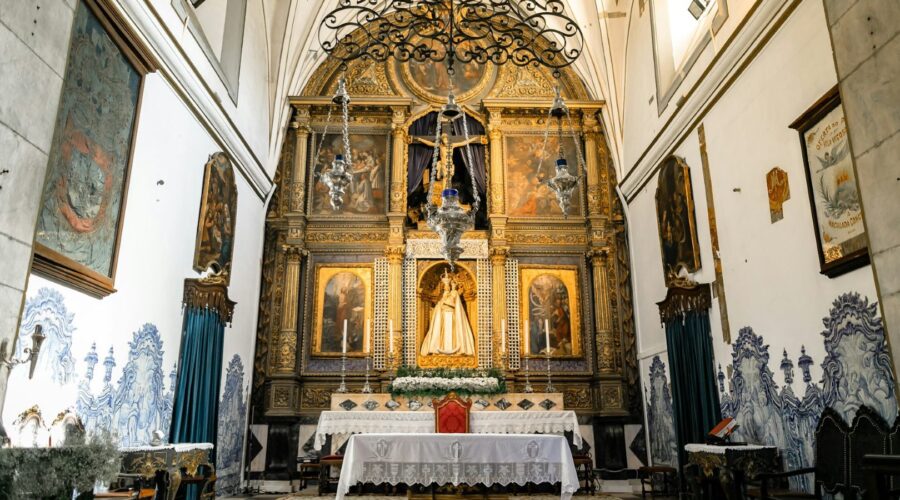
Unveiling the Enduring Charm of Stone Churches: A Comprehensive Guide
Introduction:
Stone churches, with their majestic facades and timeless appeal, have captured the hearts and imaginations of generations. Their enduring presence in various architectural styles and cultural contexts speaks volumes of their significance. This comprehensive guide will delve into the fascinating world of stone churches, exploring their history, architectural features, symbolism, and ongoing relevance in contemporary society.
History of Stone Churches:
The origins of stone churches can be traced back to the early Christian period, around the 4th century AD. As Christianity spread throughout the Roman Empire, the need for larger and more permanent places of worship emerged. Stone, with its durability and inherent grandeur, became the preferred building material for these structures.
In the Middle Ages, stone churches became increasingly elaborate, showcasing the architectural prowess of their builders. The Romanesque and Gothic styles dominated this period, characterized by massive walls, arched doorways, and intricate carvings.
Architectural Features of Stone Churches:
Exterior:
- Solid stone walls: The most striking feature of stone churches is their solid and imposing stone walls, which provide a sense of permanence and solidity.
- Arched entrances: Many stone churches feature arched entrances with ornate carvings or sculptures, often depicting biblical scenes or figures.
- Steeples and towers: Stone churches often have tall steeples or towers that serve as landmarks and provide a commanding view of the surrounding area.
Interior:
- Spacious halls: The interiors of stone churches are typically spacious, with high ceilings and wide aisles, creating a sense of grandeur and awe.
- Stained glass windows: Many stone churches feature beautiful stained glass windows that filter light in vibrant colors, creating a serene and contemplative atmosphere.
- Intricate carvings and sculptures: Stone churches are often adorned with intricate carvings and sculptures, depicting religious figures, biblical scenes, or symbolic motifs.
Symbolism of Stone Churches:
Beyond their architectural significance, stone churches hold deep symbolic meanings in Christian tradition:
- Strength and permanence: The solid stone walls represent the strength and permanence of the Christian faith, enduring through time and trials.
- Light and hope: The stained glass windows allow light to filter through, symbolizing the hope and guidance offered by Christianity in the face of darkness.
- Community and unity: Stone churches serve as gathering places for communities, fostering a sense of unity and belonging among worshippers.
Relevance of Stone Churches in Contemporary Society:
Despite their historical origins, stone churches continue to play a vital role in contemporary society:
- Places of worship: Stone churches remain active places of worship for millions of Christians worldwide, offering a sacred space for prayer, communion, and spiritual growth.
- Historical and cultural landmarks: Many stone churches are designated as historical or cultural landmarks, preserving the architectural heritage of past generations.
- Tourist attractions: Stone churches often attract tourists and visitors interested in their architectural beauty, historical significance, and cultural value.
Conclusion:
Stone churches stand as testament to the enduring power of faith, architectural ingenuity, and enduring cultural significance. Their majestic facades, intricate interiors, and profound symbolism have captivated generations. As we continue to appreciate their beauty and historical value, stone churches remain vibrant and relevant places of worship, community gathering, and cultural heritage.
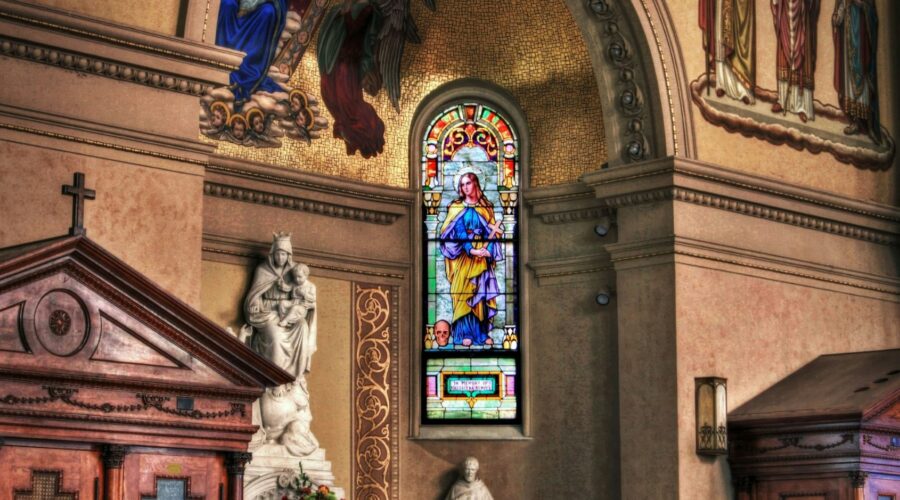
Rock Point Church: A Comprehensive Guide
About Rock Point Church
Rock Point Church is a vibrant and growing non-denominational Christian church located in Austin, Texas. Founded in 1991, the church has a rich history of reaching out to the community and sharing the message of Jesus Christ.
Mission and Values
Rock Point’s mission is “to magnify God through evangelism, edification, and equipping.” The church values:
- Authenticity
- Community
- Discipleship
- Excellence
- Generosity
Campus and Facilities
Rock Point Church has multiple campuses across Austin, including:
- Parkway
- Westlake
- Cedar Park
- Round Rock
- Pflugerville
- Hutto
Each campus offers a variety of facilities and amenities, such as:
- Sanctuary
- Children’s ministry
- Youth ministry
- Café
- Conference rooms
Ministries
Rock Point Church offers a wide range of ministries to meet the diverse needs of the congregation. These include:
KidPoint
Children’s ministry for ages 0-12, providing age-appropriate Bible teaching and fun activities.
YouthPoint
Youth ministry for grades 7-12, offering discipleship, worship, and leadership opportunities.
Young Adults
Ministry for ages 18-29, connecting young adults through community, Bible studies, and social events.
Women’s Ministry
Equipping and encouraging women through Bible studies, events, and retreats.
Men’s Ministry
Building strong Christian men through Bible studies, discipleship, and community gatherings.
CarePoint
Providing support and resources to those facing challenges, such as grief, addiction, and financial difficulty.
Leadership
Rock Point Church is led by a team of pastors and elders. The lead pastor is Mark Dance, who has served in the role since 2005.
Worship Services
Rock Point Church offers weekend worship services at all of its campuses. Services typically include:
- Contemporary worship music
- Biblical teaching
- Prayer
- Communion
Outreach
Rock Point Church is committed to serving the community and sharing the love of Christ. Outreach efforts include:
- Neighborhood outreach
- Mission trips
- Disaster relief
- Social justice initiatives
Joining the Church
Those interested in joining Rock Point Church can do so by:
- Attending a Newcomer’s Course
- Completing a membership application
- Being baptized by immersion
Conclusion
Rock Point Church is a vibrant and growing church that is committed to sharing the gospel and making a positive impact on the community. With multiple campuses, a wide range of ministries, and a dedicated leadership team, Rock Point offers a welcoming and supportive environment for people of all ages and backgrounds to grow in their faith.
Additional Resources
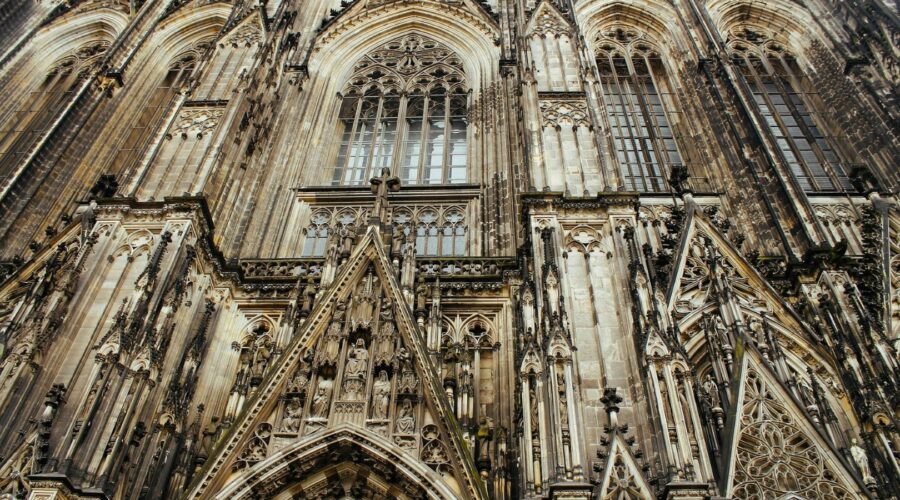
Our Lady of Fatima Church: A Beacon of Faith and History
Introduction
Nestled in the heart of San Jose, California, Our Lady of Fatima Church stands as a testament to the unwavering faith of the Portuguese immigrant community. Consecrated in 1928, this majestic church has played a pivotal role in shaping the religious and cultural landscape of the city.
History and Significance
The Fatima Apparition
Our Lady of Fatima Church derives its name from the Marian apparition that occurred in Fatima, Portugal, in 1917. Three shepherd children witnessed a series of apparitions of the Blessed Virgin Mary, who delivered a message of hope and peace to the world.
Foundation of the Church
Inspired by the Fatima apparitions, Portuguese immigrants in San Jose established a parish in 1925. The church was initially housed in a small building on South 3rd Street, but the growing congregation soon necessitated a larger space.
Construction of the New Church
In 1928, a new church building was constructed at the intersection of Santa Clara and Willow Streets. The Neo-Gothic structure, designed by architect William J. Ryan, features intricate stained glass windows, vaulted ceilings, and a magnificent altar.
Architecture and Design
Exterior Features
The exterior of Our Lady of Fatima Church is characterized by its imposing facade, topped by two bell towers. The front doors are adorned with carvings depicting the scene of the Fatima apparition.
Interior Features
- Stained Glass Windows: The church boasts 13 magnificent stained glass windows, each depicting a scene from the life of Christ or the Virgin Mary.
- Vaulted Ceilings: The nave of the church is adorned with high, vaulted ceilings that create a sense of awe and grandeur.
- Altar: The main altar is a work of art in itself, featuring a marble base, intricate carvings, and a beautiful statue of Our Lady of Fatima.
Community and Worship
Parishioners
Our Lady of Fatima Church is home to a vibrant and diverse community of over 5,000 parishioners. The congregation includes people from all walks of life, with a significant Portuguese-speaking population.
Services
The church offers a wide range of services, including daily Mass, confessions, and various spiritual programs. The parish also hosts a number of cultural events, such as the annual Portuguese Festa.
Education and Outreach
Our Lady of Fatima Church is committed to providing education and outreach to the community. The parish runs a Pre-K through 8th grade school and offers a variety of adult education and youth programs.
Visiting the Church
Directions and Parking
Our Lady of Fatima Church is located at 1010 Willow Street, San Jose, CA 95125. Ample parking is available in the adjacent lot.
Mass Schedule
Mass is celebrated according to the following schedule:
Day Time Monday – Friday 7:00 AM, 12:05 PM (Portuguese) Saturday 5:00 PM (Portuguese), 7:00 PM (English) Sunday 7:00 AM, 9:00 AM (Portuguese), 11:00 AM (English), 1:00 PM (Portuguese), 5:00 PM (Portuguese) Tours and Events
The church is open to visitors during regular hours. Guided tours are available by appointment. Check the church website or call the parish office for details on special events and tours.
Conclusion
Our Lady of Fatima Church is a living testament to the strength of faith and the power of hope. From its humble beginnings to its status as a beloved landmark, the church continues to serve as a spiritual sanctuary and a source of inspiration for the community. Whether you are a devout Catholic, a history enthusiast, or simply seeking a place of peace, a visit to Our Lady of Fatima Church is sure to leave a lasting impression.
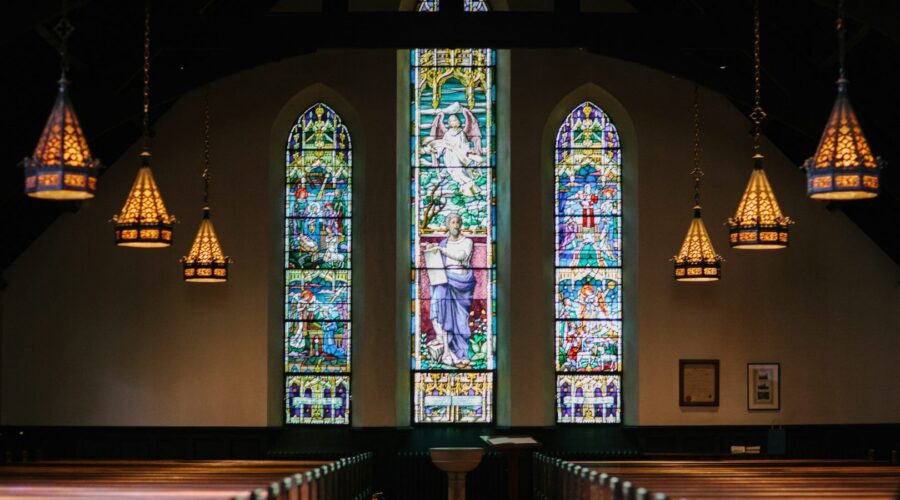
Cathedral Mass Schedule: A Comprehensive Guide
Introduction
Cathedrals, as the seats of bishops and the centers of diocesan life, hold a special significance in the Catholic Church. They are places of worship, pilgrimage, and community gatherings. Attending Mass at a cathedral can be a spiritually enriching experience, and knowing the Mass schedule is essential for planning your visit.
Types of Masses
Daily Mass
Daily Masses are celebrated Monday through Saturday. The timing may vary depending on the cathedral, so it’s best to check their website or call the rectory for specific times.
Sunday Mass
Sunday Mass is typically celebrated on Sundays and major feast days. The schedule may include multiple Mass times to accommodate larger crowds.
Special Masses
Cathedrals may offer special Masses on holy days of obligation, such as Christmas, Easter, and Pentecost. They may also hold Masses for specific intentions, such as healing, vocations, or world peace.
How to Find the Mass Schedule
There are several ways to find the Mass schedule for a cathedral:
- Cathedral Website: Most cathedrals have their own websites that provide up-to-date information, including the Mass schedule.
- Diocesan Website: Diocesan websites often list the Mass schedules for all parishes and cathedrals within the diocese.
- Phone Call: You can call the cathedral’s rectory or office directly to inquire about their Mass schedule.
- Visitor Information: Many cathedrals offer visitor information desks or brochures that may include the Mass schedule.
Example Cathedral Mass Schedules
Cathedral Daily Mass Sunday Mass St. Patrick’s Cathedral, New York Monday-Friday: 7:00 AM, 12:10 PM
Saturday: 8:30 AMSaturday Vigil: 5:30 PM
Sunday: 8:00 AM, 9:30 AM, 11:00 AM, 12:30 PM, 5:30 PMNotre Dame Cathedral, Paris Monday-Friday: 8:00 AM, 12:00 PM, 6:00 PM
Saturday: 9:00 AMSunday: 8:00 AM, 9:30 AM, 11:00 AM, 5:00 PM Cologne Cathedral, Cologne Monday-Sunday: 7:00 AM, 8:30 AM, 12:00 PM Sunday: 10:00 AM (Pontifical Mass) Tips for Attending Mass at a Cathedral
- Arrive on Time: It’s advisable to arrive at least 15-20 minutes before Mass to find a seat and prepare yourself.
- Dress Appropriately: While there is no formal dress code, it’s recommended to dress respectfully.
- Respect the Liturgy: Participate actively in the Mass and follow the liturgical norms.
- Consider Visiting: Even if you’re not attending Mass, consider visiting the cathedral for its architectural beauty and historical significance.
Conclusion
Knowing the cathedral mass schedule allows you to plan your visit and participate in this important liturgical celebration. Whether you’re a regular parishioner or a visitor, attending Mass at a cathedral can be a spiritually enriching experience that connects you to the wider Catholic community.